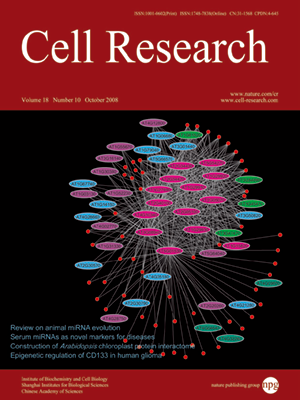Volume 18 Issue 10, October 2008: 1020-1036
ORIGINAL ARTICLES
BCL-XL regulates TNF-α-mediated cell death independently of NF-κB, FLIP and IAPs
Raffaella Gozzelino1, Carme Sole1, Nuria Llecha2, Migue1 F Segura1, Rana S Moubarak3, Victoria Iglesias-Guimarais3, M Jose Perez-Garcia1, Stephanie Reix3,4, Jisheng Zhang1, Nahuai Badiola3,4, Daniel Sanchis1, Jose Rodriguez-Alvarez3,4, Ramon Trullas5, Victor J Yuste3,* and Joan X Comella1,3,4,*
1Cell Signaling and Apoptosis Group, Departament de Ciències Mèdiques Bàsiques, Universitat de Lleida, Montserrat Roig, 2, 25008 Lleida, Spain;
2Departament de Patologia i Genètica Molecular, Hospital Universitari Arnau de Vilanova, Universitat de Lleida, Montserrat Roig, 2, 25008 Lleida, Spain
3Institut de Neurociències, Departament de Bioquímica i Biologia Molecular, Facultat de Medicina, Universitat Autònoma de Barcelona, Campus de Bellaterra (Edifici M), 08193 Bellaterra, Spain
4Centro de Investigación Biomédica en Red sobre Enfermedades Neurodegenerativas (CIBERNED), Spain;
5Neurobiology Unit, Institut d'Investigacions Biomèdiques de Barcelona, CSIC, IDIBAPS, 08036 Barcelona, Spain
Correspondence: Victor J Yuste(victor.yuste@uab.cat )
QUpon activation, tumor necrosis factor alpha (TNF-α) receptor can engage apoptotic or survival pathways. Inhibition of macromolecular synthesis is known to sensitize cells to TNF-α-induced cell death. It is believed that this sensitization is due to the transcriptional blockade of genes regulated by NF-κB. Nevertheless, such evidence has remained elusive in the nervous system. Here, we show that TNF-α cannot normally induce apoptosis in PC12 cells or cortical neurons. However, cells treated with Actinomycin D (ActD) become susceptible to TNF-α-induced cell death through the activation of caspase-8, generation of tBid and activation of caspase-9 and -3. Analysis of several proteins involved in TNF-α receptor signaling showed no significant downregulation of NF-κB target genes, such as IAPs or FLIP, under such conditions. However, Bcl-x
L protein levels, but not those of Bcl-2, Bax and Bak, are reduced by ActD or TNF-α/ActD treatments. Moreover, Bcl-x
L overexpression fully protects cells against TNF-α/ActD-induced cell death. When endogenous levels of Bcl-x
L are specifically downregulated by lentiviral-based RNAi, cells no longer require ActD to be sensitive to TNF-α-triggered apoptosis. Furthermore, Bcl-x
L downregulation does not affect TNF-α-mediated NF-κB activation. Altogether, our results demonstrate that Bcl-x
L, and not Bcl-2, FLIP or IAPs, acts as the endogenous regulator of neuronal resistance/sensitivity to TNF-α-induced apoptosis in an NF-κB-independent manner.
Cell Research (2008) 18:1020-1036. doi: 10.1038/cr.2008.76; published online 1 July 2008
FULL TEXT | PDF
Browse 1839


